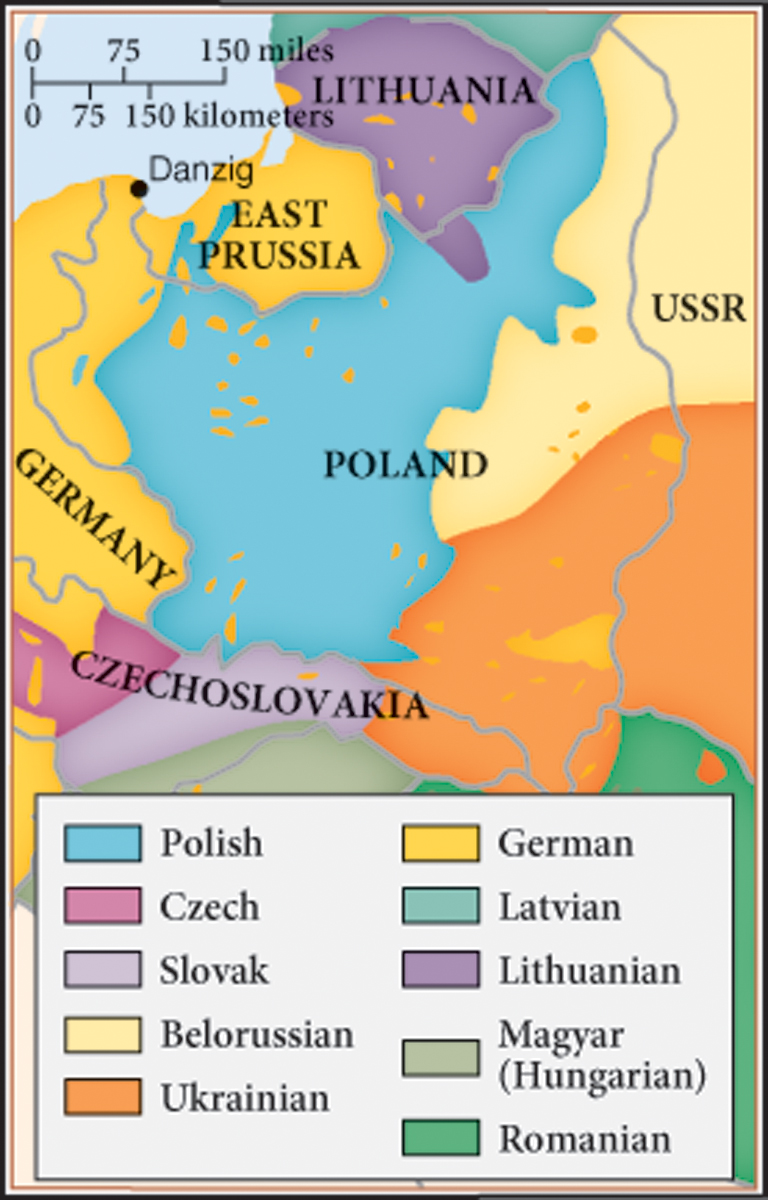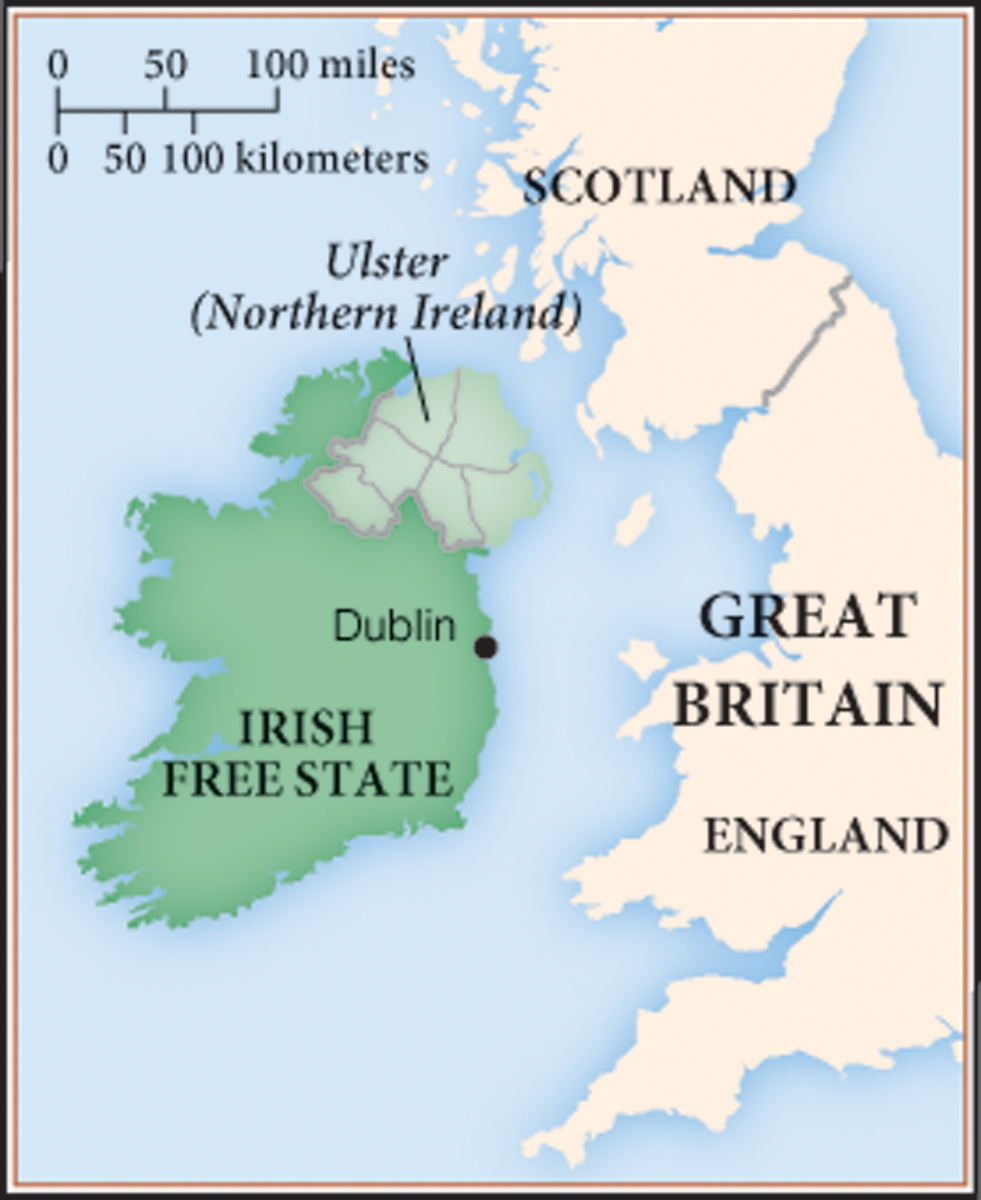Changes in the Political Landscape
Printed Page 840
Important EventsChanges in the Political Landscape
The collapse of autocratic governments and the widespread extension of suffrage to women brought political turmoil as well as the expansion of democracy. Woman suffrage resulted in part from decades of activism, but many men in government claimed that suffrage was a “reward” for women’s war efforts. Women were voted into parliaments in the first postwar elections. Yet French men pointedly denied women the vote, threatening that women voters would bring back the rule of kings and priests. (Only at the end of World War II would France and Italy extend suffrage to women.) The welfare state also expanded, with payments being made to veterans and victims of workplace accidents. These benefits stemmed from the belief that more evenly distributed wealth—sometimes called economic democracy—would prevent the outbreak of revolution.
Women Gain Suffrage in the West
| 1906 | Finland |
| 1913 | Norway |
| 1915 | Denmark, Iceland |
| 1917 | Netherlands, Russia |
| 1918 | Czechoslovakia, Great Britain (limited suffrage) |
| 1919 | Germany |
| 1920 | Austria, United States |
| 1921 | Poland |
| 1925 | Hungary (limited suffrage) |
| 1945 | Italy, France |
| 1971 | Switzerland |
The trend toward economic democracy was not easy to maintain, however, because the cycles of boom and bust that had characterized the late nineteenth century reemerged. A short postwar economic boom prompted by reconstruction and consumer spending was followed by an economic downturn that was most severe between 1920 and 1922. By the mid-1920s, women made up a smaller percentage of the workforce than in 1913, and skyrocketing unemployment produced more discontent with governments. Veterans were especially angered by economic insecurity after years of enduring the war’s horrors.
The new republics of eastern Europe in particular were unprepared for hard economic times and poorly equipped to compete in the world market. None but Czechoslovakia had a mature industrial sector, and agricultural techniques were often primitive. Still more pressing problems hampered them. Vast migrations occurred as some 1 million citizens escaped the civil war in Russia and 800,000 soldiers from the defeated Whites searched for safety. Two million people fled Turkey, Greece, and Bulgaria because the postwar settlement called for the new nations to be built along “nationality” lines. Hundreds of thousands landed in new nations: Hungary, for example, had to receive 300,000 people of Magyar ethnicity who were no longer welcome in Romania, Czechoslovakia, or Yugoslavia. Most of these millions of refugees lacked land or jobs. They had nothing to do “but loaf and starve,” one English journalist observed of refugees in Bulgaria. The influx of people brought more conflict in various parts of eastern Europe.

Poland exemplified how postwar turmoil could destroy a new nation’s parliamentary democracy. One-third of the reunified Poland consisted of Ukrainians, Belorussians, Germans, and other ethnic minorities—many of whom had grievances against the dominant Poles. Varying religious and cultural traditions also divided the Poles, who for 150 years had been split among Austria, Germany, and Russia. Polish reunification occurred without a common currency or political heritage—even the railroad tracks were not a standard size. Despite a new constitution that professed equal rights for all ethnicities and religions, declining crop prices and overpopulation made life in the countryside difficult. The economic downturn brought strikes and violence in 1922–1923. Ultimately, former military leader Jozef Pilsudski took power via a coup in 1926 because of the government’s inability to bring about prosperity. In postwar east-central Europe, military solutions to economic hardship demonstrated the endurance of war long after the peace had officially begun.
Germany was a different case. Although its economy picked up and the nation became a center of experimentation in the arts, political life remained unstable because so many people, nostalgic for imperial glory, associated defeat with the new Weimar Republic. Extremist politicians heaped daily abuse on Weimar’s democracy. A wealthy newspaper and film tycoon called anyone cooperating with the parliamentary system “a moral cripple.” Right-wing parties favored violence rather than consensus building, and nationalist thugs murdered democratic leaders and Jews. Communists were not shy about jumping into street brawls, either.
Support for the far right came from wealthy landowners and businessmen, white-collar workers whose standard of living had dropped during the war, and members of the lower-middle and middle classes hurt by inflation. Bands of disaffected youth and veterans multiplied, among them a group called the Brown Shirts. Their leader was an ex-soldier named Adolf Hitler (1889–1945)—a favorite speaker among antigovernment crowds. In the wake of the Ruhr occupation of 1923, Hitler and German military hero Erich Ludendorff launched a coup d’état—or putsch in German—from a beer hall in Munich. Government troops suppressed the Beer Hall Putsch and arrested its leaders, but Ludendorff was acquitted and Hitler spent less than a year in jail. To conservative judges, former aristocrats, and most of the prewar bureaucrats who still staffed the government, such men were national heroes.
In France and Britain, parties on the right were less effective than in Germany because representative institutions were better established and the upper classes were not plotting to restore an authoritarian monarchy. In France, politicians from the conservative right and moderate left successively formed coalitions and rallied general support to rebuild war-torn regions and to force Germany to pay for the reconstruction. Hoping to stimulate population growth after the devastating loss of life, the French parliament made distributing birth-control information illegal and abortion a severely punished crime.
Britain encountered postwar boom-and-bust cycles and continuing conflict in Ireland. Ramsay MacDonald (1866–1937), elected the first Labour prime minister in 1924, represented the political strength of workers. He had to face the unpleasant truth that although Britain had the largest world empire, many of its industries were obsolete or in poor condition. A showdown came in the ailing coal industry. On May 3, 1926, workers launched a nine-day general strike against wage cuts and dangerous conditions in the mines. The strike provoked unprecedented middle-class resistance. University students, homemakers, and businessmen shut down the strike by driving trains, working on docks, and replacing workers in other jobs. Seeing strikers as those who were once again attacking the nation, citizens from many walks of life began working through their wartime traumas with words and deeds, inflicting their violence on conquered lands near and far.

In January 1919, Ireland’s republican leaders declared their nation’s independence and created a separate parliament. The British government refused to recognize the parliament and sent in the Black and Tans, a volunteer army of demobilized soldiers named for the color of their uniforms. Terror reigned in Ireland, and by 1921, public outrage had forced the British to negotiate a treaty, one that reversed the Irish declaration of independence and made the Irish Free State a self-governing dominion. Northern Ireland, a group of six northern counties containing a majority of Protestants, gained a separate status: it was self-governing but still had representation in the British Parliament. This settlement left bitter discontent.
War had also changed everything in the colonies. European politicians and military recruiters had promised colonized peoples reforms, even independence, in exchange for their support during the war. However, these peoples’ political activism—now enhanced by increasing education, trade, and experience with the West—mostly met with a brutal response. British forces massacred protesters at Amritsar, India, in 1919, put down revolts against the mandate system in Egypt and Iran in the early 1920s, and slaughtered women peacefully protesting in Nigeria in 1929. The Dutch jailed political leaders in Indonesia; the French punished Indochinese nationalists. Western governments thus continued warfare in the colonies; the Germans who had lost their holdings brought the war home instead. Maintaining empires abroad was also seen as crucial to ensuring democratic government, for any hint of declining national prestige fed antidemocratic forces.
Despite resistance, the 1920s marked the high tide of imperialism. Britain and France, enjoying new access to Germany’s colonies in Africa and the territories of the fallen Ottoman Empire in the Middle East, were at the height of their global power because of the growing profitability that enterprise around the world could bring. Middle Eastern and Indonesian oil, for instance, fueled the West’s growing number of automobiles, airplanes, trucks, ships, and buses. Products like chocolate and tropical fruit became regular items in Westerners’ diets.
The balance of power among the imperial nations was shifting, however. The most important change was Japan’s surging competition for markets, resources, and ultimately colonies. During the war, Japanese output of industrial goods such as metal and ships grew dramatically because the Western powers outsourced their wartime needs for such products. Japan’s prosperity skyrocketed, allowing the country to become the dominant power in China. The Japanese government advertised its success as a sign of hope for non-Westerners. Japan’s prosperity, the country’s politicians claimed, would end the West’s domination. Ardently nationalist, the Japanese government was not yet strong enough to challenge the Western powers militarily. Thus, although outraged when the Western powers at Paris refused a nondiscrimination clause in the charter of the League of Nations, Japan cooperated in the Anglo-American-dominated peace.